Hungry Mouths
With one chick on the nest and two more hopefully not far behind, our male osprey, LM12, will have to step up his fishing efforts to feed his growing family. He has been getting well into the swing of things, averaging about two or three fish a day, but osprey chicks require plenty of nutrition in order to go from hatching to migration in just 12 short weeks. LM12 will have to begin delivering about five fish a day so his offspring can put on the required weight, so we should be seeing much more frequent fishing activity and our Osprey Watch team will do their best to identify every meal the birds have. Visitors to the loch are often curious about the species our resident birds eat, so let’s take a look at what’s on the menu for our feathered family.
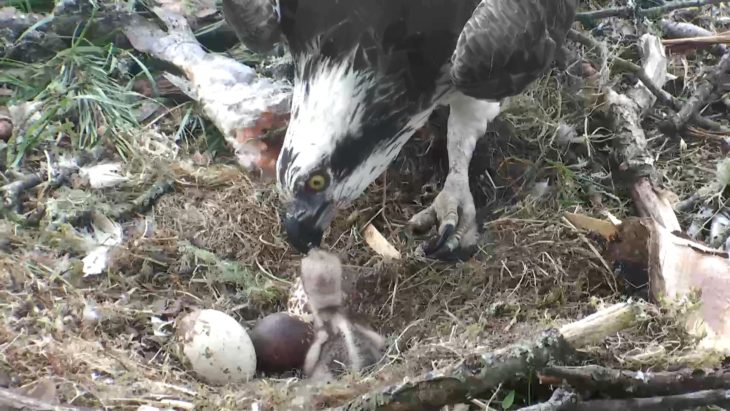
Our first chick of the season had a luxurious start in life, receiving a meal of salmon yesterday afternoon as soon as LF15, our female osprey, decided it was time. A salmon is a rare catch for our birds but, curiously, a salmon was also the first meal for the first chick of last season. It seems that our resident pair’s children have expensive taste and appreciate the dense nutrition of an oily salmon.
The spring spawning has produced large numbers of juvenile pike and perch in the loch, and LM12 has been having good luck plunging from trees into sunny, sheltered areas where the small fish hide and hunt. Last week he was seen to make five attempts in half an hour, all unfortunately unsuccessful on that occasion. Perch and pike are two quite distinctive catches, both having obvious markings and hard to mistake shapes. Pike are large, long and fairly straight fish with splotchy patterning on their sides, and perch have dark vertical stripes running down their body. Perch are also easy to identify due to their red-tinged fins, including a prominent dorsal fin. Our great-crested grebes and a pair of goosanders have also joined the bonanza, and can often be seen struggling to swallow fish wider than their necks.

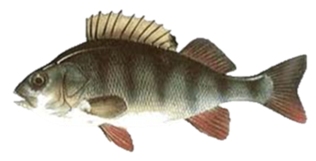
It is not just young fish that are vulnerable to LM12’s sharp and sticky talons though, and he has landed several large adult pike this season. Visitors are often surprised to hear he can tackle such large and fierce fish, but ospreys are so strong that they can carry prey nearly as heavy as themselves, and fish have little defence against an osprey swooping down on to their back save for attempting to swim further down into the water. One pike that LM12 delivered this weekend was so long and large that an enterprising bird perched underneath him as he ate and attempted to steal the catch by pulling down on the tail! In the end our male prevailed and the ospreys spent hours working through the fish, but the opportunist got several dropped scraps as a reward for its gallus behaviour.
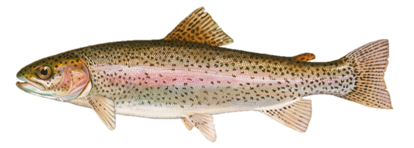
Rainbow trout is a regular catch for our male and is a familiar sight in supermarkets as well. A popular species among fish farms and angling clubs, Rainbow trout gain weight quickly and we have seen some very impressive fish on the nest this year. These fish are easy to spot when landed as they have extensive spots on their body and usually a pink or mauve flash along their side. Rarely, a genetic variant can cause a Rainbow trout to be born as a brightly coloured Blue trout, but as far as we know none of these have been brought to our nest this year.
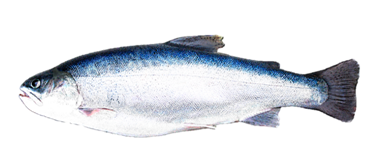
Generally well distributed in Scotland, Brown trout also feature in our ospreys’ diet. These fish show a huge amount of colour variation, often depending on the habitat they live in, and this can cause confusion when we try to identify a catch. However, body characteristics such as the shape of the tail and fin, as well as their placement, are reliable indicators when a particularly unusual looking trout is brought home. Brown trout often show large red or orange spots on their side and these are usually very obvious on our nest camera. Sometimes a genetic variation can cause a Brown trout to be born as a Blue trout but this is even rarer than with Rainbow trout.
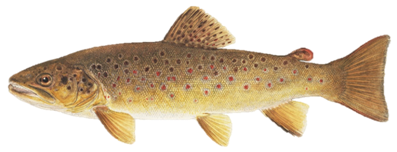
Of course, the osprey chicks will not be the only hungry mouths on the reserve this season, and this weekend we were very pleased to see chicks appear in our monitored blue tit nest box outside the visitor centre. Both parents are busily feeding the young on plenty of caterpillars and we hope to see some young birds fledge successfully.
As we watch the ospreys changing from incubation to raising young it will be interesting to see if LM12 sticks to his familiar patterns of consuming the heads of larger catches before delivery but giving most small fish over whole. The family have spent the first day with their new chick working through the large salmon LM12 caught before hatching, and it is a truly special sight to see LF15 delicately passing pieces of fish to her new baby. Our osprey webcam is available 24 hours a day and we hope you will keep up with us and the birds as they strive to raise their new chicks.
Lynsey, Species Protection Officer
Did you know? There are no known self-sustaining populations of Rainbow trout in Scotland. Fisheries and farms use all-female or genetically sterile stock in order to prevent the trout from becoming a breeding invasive species in Scottish waters.
Help protect Scotland’s wildlife
Our work to save Scotland’s wildlife is made possible thanks to the generosity of our members and supporters.
Join today from just £3 a month to help protect the species you love.
Preface
With one chick on the nest and two more hopefully not far behind, our male osprey, LM12, will have to step up his fishing efforts to feed his growing family. …
